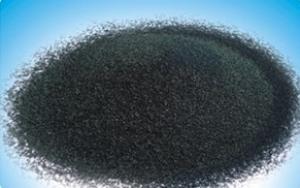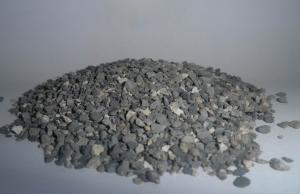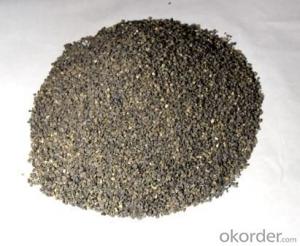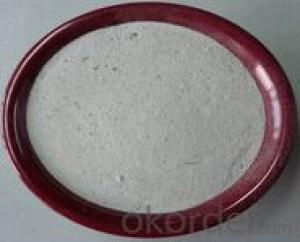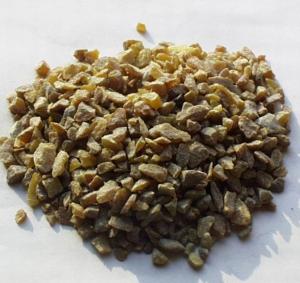High-Quality Drainage Agent Raw Materials for Refractory
- Loading Port:
- China Main Port
- Payment Terms:
- TT OR LC
- Min Order Qty:
- -
- Supply Capability:
- -
OKorder Service Pledge
OKorder Financial Service
You Might Also Like
Drainage agent
Product description
According to the iron and steel industry in the process of continuous casting the performance of existing drainage agent bad to open rate since the ladle is not high, burn oxygen excessive, even cause continuous casting process interrupt problem, our company developed the development and production of high flow initiator series products. It is made by the high quality imported GeKuangSha, refined quartz sea sand and high refractoriness material composition, with good fluidity, more than major and fast speed, the appropriate sintering thickness, resistance to erosion and penetration, molten steel ladle artesian free-opening rate above 98%, and other characteristics, greatly to reduce the labor intensity of recognized, reduce oxygen blowing drainage, improve the quality of steel products, ensure continuous casting process smoothly.
Drainage agent series physical and chemical instructions:
model | SiO2 AL2O2 Fe2O2 MgO Cr2O2 Particle size Water (%) |
LF-Si-1 | 92~98 -- -- -- -- 0.315~2.5 <0.5 |
LF-Si-2 | 86~92 <5 <3 <3 1~5 0.15~2.5 <0.5 |
LF-Si-3 | 75~84 3~10 <3 <5 -- 0.315~2.5 <0.5 |
LF-Cr-1 | 23~28 9~14 18~23 6~10 32~38 0.15~2.0 <0.5 |
LF-Cr-2 | 35~40 <8 13~19 5~8 28~33 0.15~2.0 <0.5 |
LF-Cr-3 | 15~20 10~15 16~22 7~11 38~44 0.15~2.0 <0.5 |
LF-Mg-1 | 70~80 -- -- 10~20 -- 0.15~2.0 <0.5 |
Applicable scope General silicon, magnesia drainage agent used in the short flow steelmaking process; Ordinary chrome conduction agent used in refining quality time less than 45 min or not scouring the steelmaking process; Refining chrome conduction agent used in quality LF, VD, RH and refining the longer steelmaking process; Chromium stainless steel mass flow initiator used in steel stainless steel series; Thin flow initiator suitable for various kinds of thin sections of steelmaking process.


- Q: What are grade classifications of the external walls fireproofing material?
- There are many kind of external walls fireproofing material, according to the document No. 65, the grade of external wall fireproofing material can be divided into: Level A is inorganic insulation non-combustible materials, such as cement foam insulation board, vitrified?micro bead?thermal insulation?mortar, rock wool board, glass wool panels. Level B1 is nonflammable material, mostly are organic material which has added a relatively large amount of flame retardant, such as polystyrene board, extruded sheet, phenolic foam board and polyurethane board. Level B2 is flame-retardant materials, and also known as fire-retardant materials, mostly are organic insulation materials with appropriate amount of flame retardant.
- Q: which kind of fire?bulkhead is better?
- I think fire bulkhead is good, fire bulkhead also known as non-combustible fire retardance board, and it's made by various incombustible?material after the scientific pressing, and has good flame resisting properties, it's non-combustible time can reach over 3 hours, high mechanical strength,it has characteristics of non-explosive, water and oil resistance, good chemical corrosion resistance and non-toxic.
- Q: How to solve the shell, the crack problem of refractory material in the process of forming.
- Pressure mode and number of pressure control "spallation". 2, multiple pressure, pressure degree and discharge way: 1, reduce friction, choose appropriate, than big pressure disposable pressure produced by the plastic deformation, allocate reasonable grading, internal and external friction, reduce billet particles and high die wall bright. 4.--- solve the light one firstly. --moisture content being too high easily cause spallation - the compressibility of water is small and have certain elasticity, appropriately to extend the pressuring time is beneficial. The material can produce large plastic deformation under the effect of continuous load. The right amount of lubricant. - body under the condition of less pressure but long effect time molding. Mould structure is reasonable and improve billet natural stacking density. 5.3, measures to improve the unburned brick molding quality. Many times continuously pressure relief is better than one-off sudden unloading, and controlling the appropriate moisture content;- - is beneficial to air overflow.
- Q: Which refractory material is better in China? Industrial furnace, mainly in non-ferrous industries, glass kiln, cement kiln business.
- Such solid nano microporous insulation material with nano inorganic refractory powder special, with a huge surface area, nano particles contact between the minimum point contact point contact thermal resistance is very large, the heat conduction effect of the material becomes very small, resulting in heat conduction coefficient of solid such nano porous insulation materials very small; nano pores formed of nanoparticles, the average size of 20 nm, and the average free path of molecular thermal motion at room temperature under static air is 60 nm, thus locking the air molecules in powder within nano pores, making the micro convection heat transfer effect between the stationary air molecules disappeared. The room temperature thermal conductivity of solid such nano microporous insulation material is lower than the static air; at high temperature, the main effect of heat transfer heat radiation, Good energy-saving insulation materials with nano microporous infrared additive special, stop at a high temperature and reflected infrared radiation, reduce the heat radiation effect to the lowest point, the radiation heat transfer coefficient of materials under high temperature is reduced to the lowest value.
- Q: What are the differences and connections between softening temperature of the refractory under a fixed load and thermal resistant creep property of the refractory?
- The result of refractoriness under load is temperature while the result of creep is percentage of deformation. Refractoriness under load and creep can be tested by an instrument. Refractoriness under load reflects the temperature in which the deformation reaches a certain degree under the condition of load. Creep reflects the deformation refractory has under the condition of constant temperature and load. Both refractoriness under load and creep are important criterion for the operating temperature of refractory.
- Q: What kind of refractory materials can withstand 1500℃ when processing briquette stove core and meanwhile cost less?
- The main material is quartz sand and it is the cheapest, and can resist 1500℃ without any difficulty.
- Q: What are the raw materials of refractory?
- Refractory is mainly resistant to high temperature and fire. Sic refractories are widely used in refractory. I hope my answer will be helpful to you.
- Q: What are the common refractory insulation cotton material?
- Fire resistant thermal insulation material mainly refers to inorganic thermal insulation material and compround thermal insulation material. According to the shape can be divided into: Fibrous finishes, slag wool, rock wool, glass wool, aluminum silicate cotton. ceramic fiber, micro pile of diatomite, calcium silicate, expanded perlite, expanded vermiculite, aerated concrete etc., foam like bubble glass, volcanic ash glass, foam clay, foaming concrete, paste powder polystyrene particles insulation slurry Their common characteristics is fire resistant, applicable for buildings that have high requirement for fire resisitance level. Calcium silicate, aluminum silicate, asbestos, etc. can also be used for thermal insulation of high temperature heat transfer pipe. I hope my answer can help you
- Q: Which refractory is better for building 1500 degree kiln ?
- High alumina brick or 99 alumina hollow ball brick is OK, which can withstand a temperature of 1600 ℃.
- Q: How to distinguish the fire resistant level of construction materials?
- Division of fire resistant level of building material: 1, It can be divided into five levels according to the importance: a, special class: commerative, historic, international and national buildings. b, Class A: high-grade residential architecture and public building. c, class B: middle-grade residential architecture and public building. d, class C: orinary residential architecture and public building. 2, It can be divided into four grades according to fireproof?performance: Fire resistance level buildings is divided into four levels. Standard of fire resistant level is based on the combustion performance and fire endurance of main components of the house. 3, It can be divided into 4 levels according to durable life: a, A grade durable life, over 100 years, for important buildings and high-rise buildings. b, second level durable life, from 50 to 100 years, for ordinary buildings. c, third level durable life, from 25 to 50 years, for secondary buildings. D, fourth level durable life, less than15 years , for temporary buildings. I hope my answers will help you.
Send your message to us
High-Quality Drainage Agent Raw Materials for Refractory
- Loading Port:
- China Main Port
- Payment Terms:
- TT OR LC
- Min Order Qty:
- -
- Supply Capability:
- -
OKorder Service Pledge
OKorder Financial Service
Similar products
Hot products
Hot Searches
Related keywords
